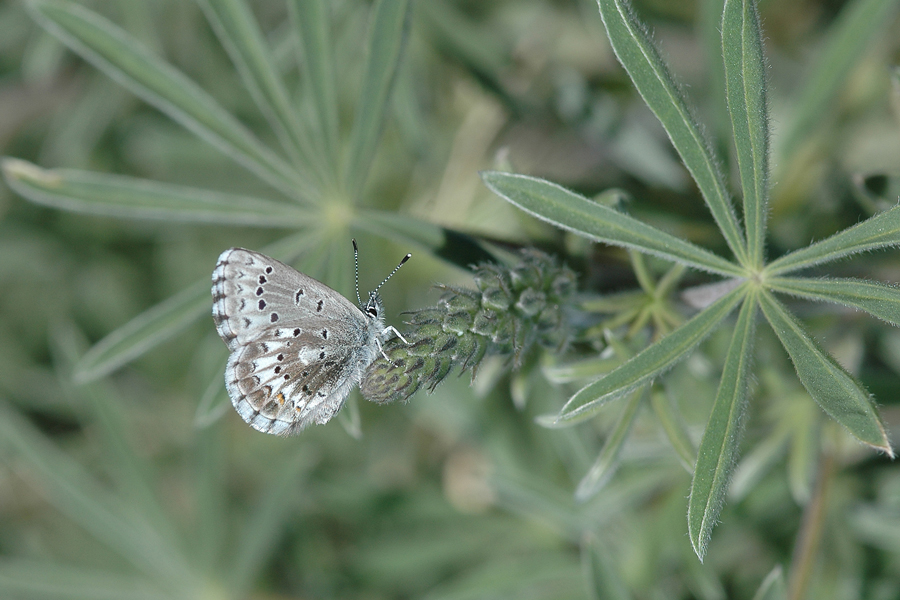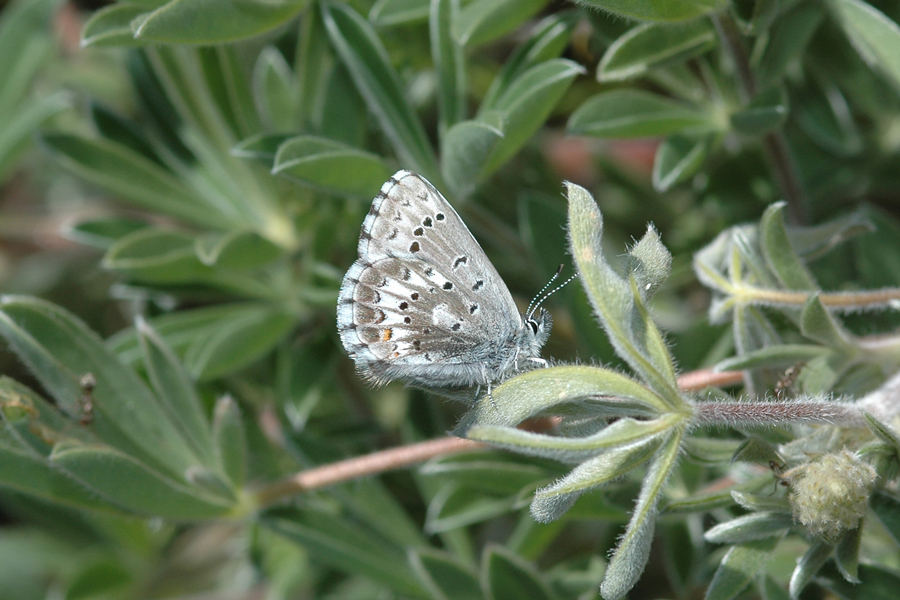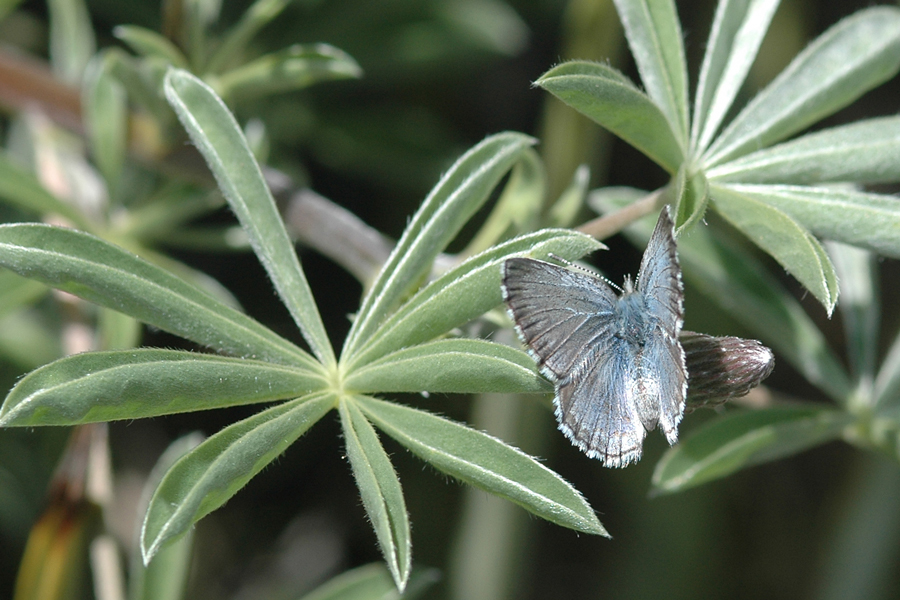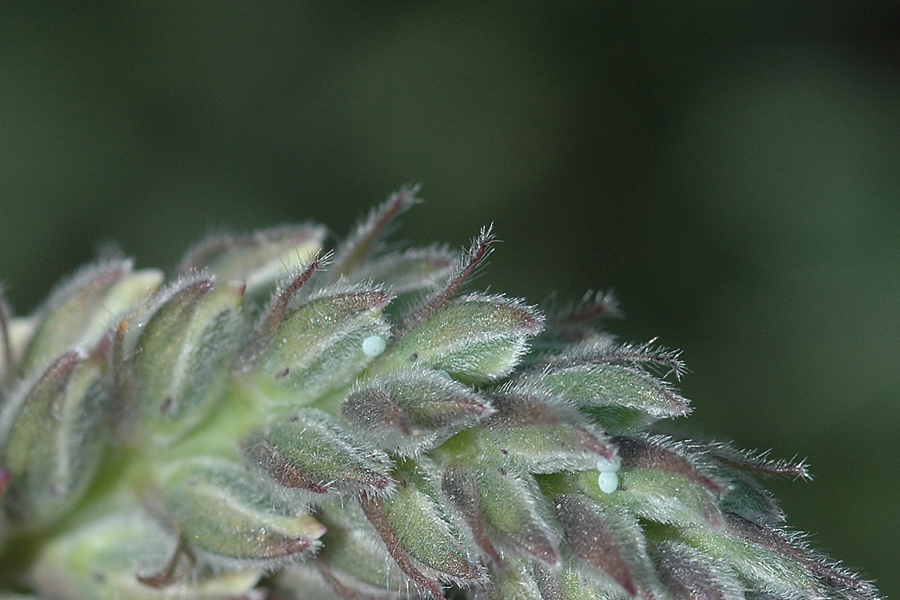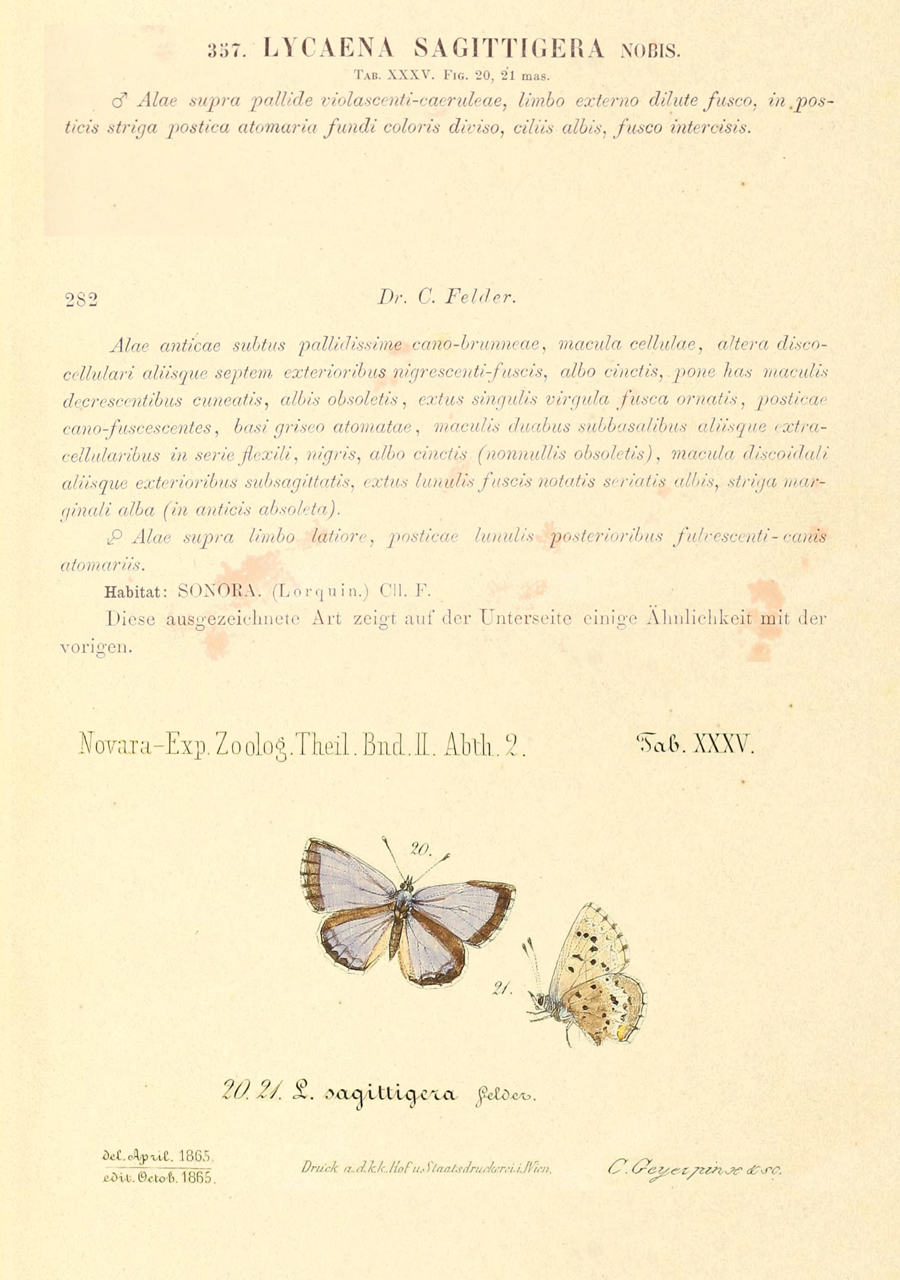Glaucopsyche piasus sagittigera
Arrowhead Blue
This subspecies of the arrowhead blue is found at lower elevations around the San Gabriel Mountains and up into Santa Barbara County. Sagittigera has boldly-contrasting "arrowheads" on the hind wing. Like the other populations of piasus, this one uses lupines, flies in one spring brood (March into May), and overwinters as a chrysalis. The type locality has been clarified over time from the original "Sonora" (1865) to the vicinity of Los Angeles (1971), and finally to Glendale (1998).
This arrowhead blue is Glaucopsyche piasus sagittigera from Lone Pine Canyon on the north side of the San Gabriels near Wrightwood. It uses Lupinus excubitus. April 18, 2009. Thanks to John F. Emmel for help finding this subspecies.
Another arrowhead blue hanging around the roadside lupines on the same day.
Another view of Glaucopsyche piasus sagittigera from the same trip to Lone Pine Canyon. Note the great 'arrowheads' on this one.
Dorsal of the arrowhead blue, Glaucopsyche piasus sagittigera, same day. They don't spread their wings much, in my brief experience.
There were three eggs on this part of the stalk. This is what I first saw on this attempt to find this butterfly, and when I saw eggs I knew I'd see adults, which weren't yet flying when I visited this area a couple weeks earlier.
This is the Felders' original description of this butterfly from 1865 in Reise der österreichischen Fregatte Novara um die Erde in den Jahren 1857, 1858, 1859 unter den Befehlen des Commodore B. von Wüllerstorf-Urbair (Voyage of the Austrian frigate Novara around the world in 1857, 1858, 1859 under the command of Commodore B. von Wüllerstorf-Urbair). Of course, they didn't know much about the California butterflies they were describing. I've excerpted this from two volumes, one with text, the other with illustrations, many of which are very well executed.
©Dennis Walker
